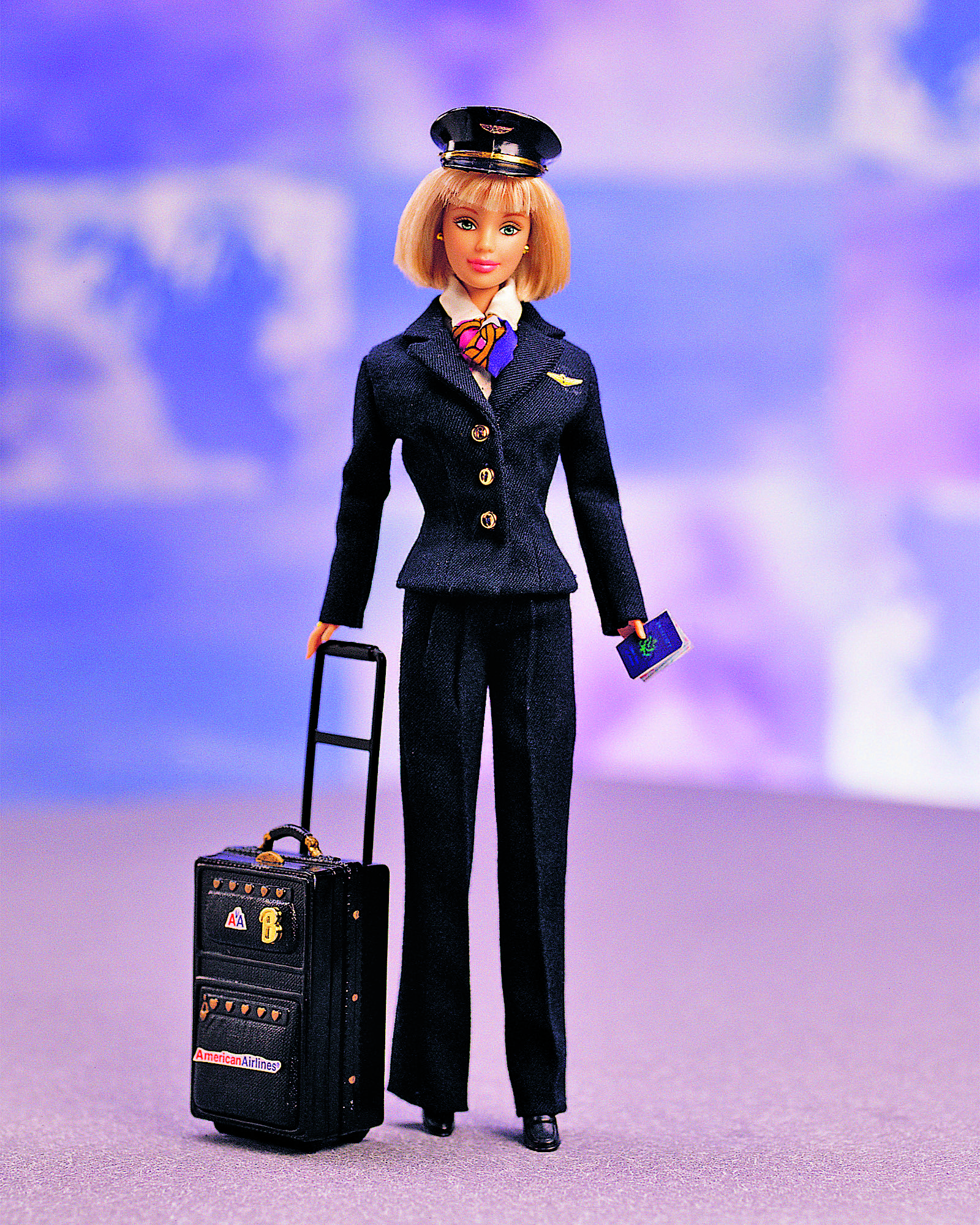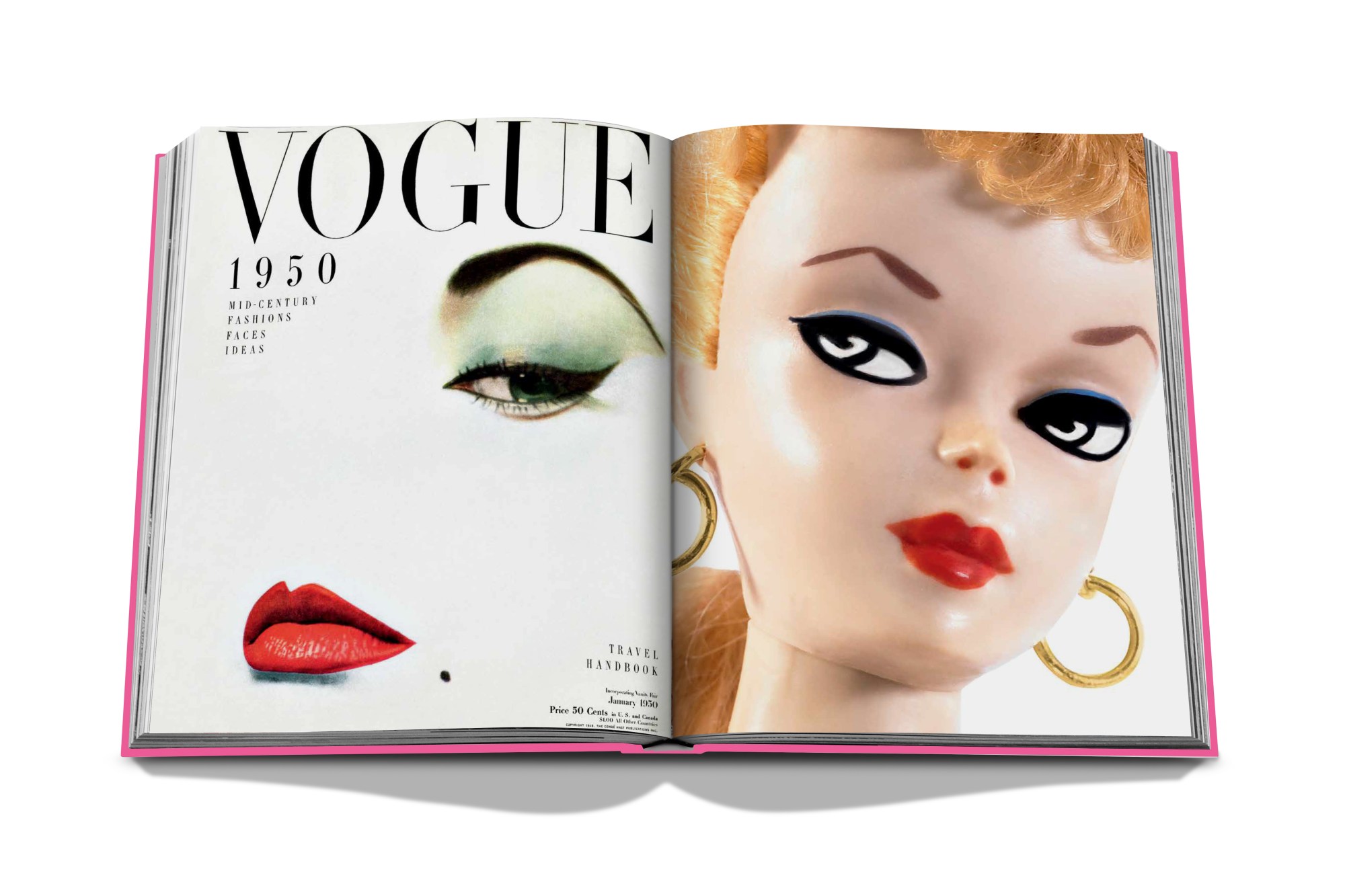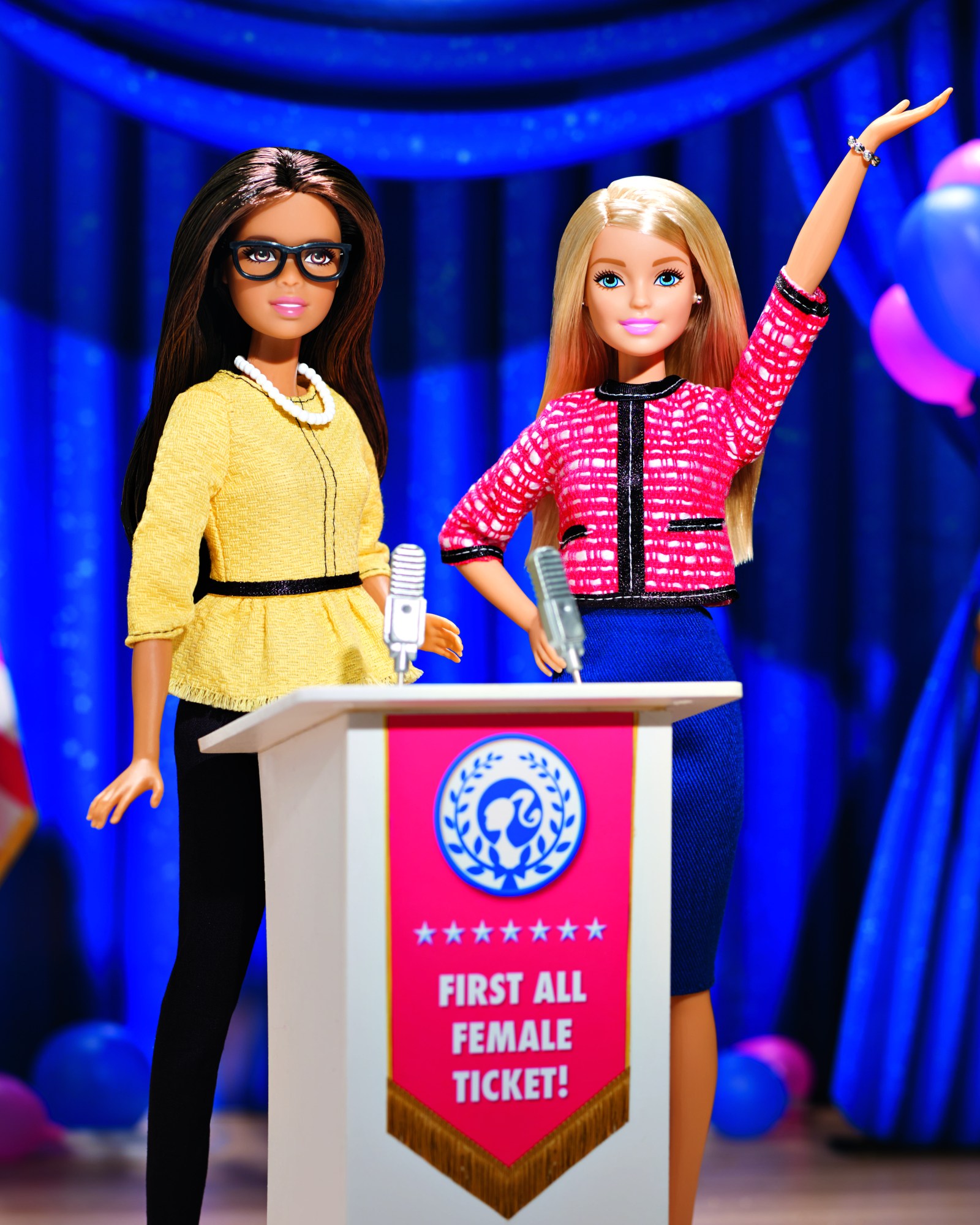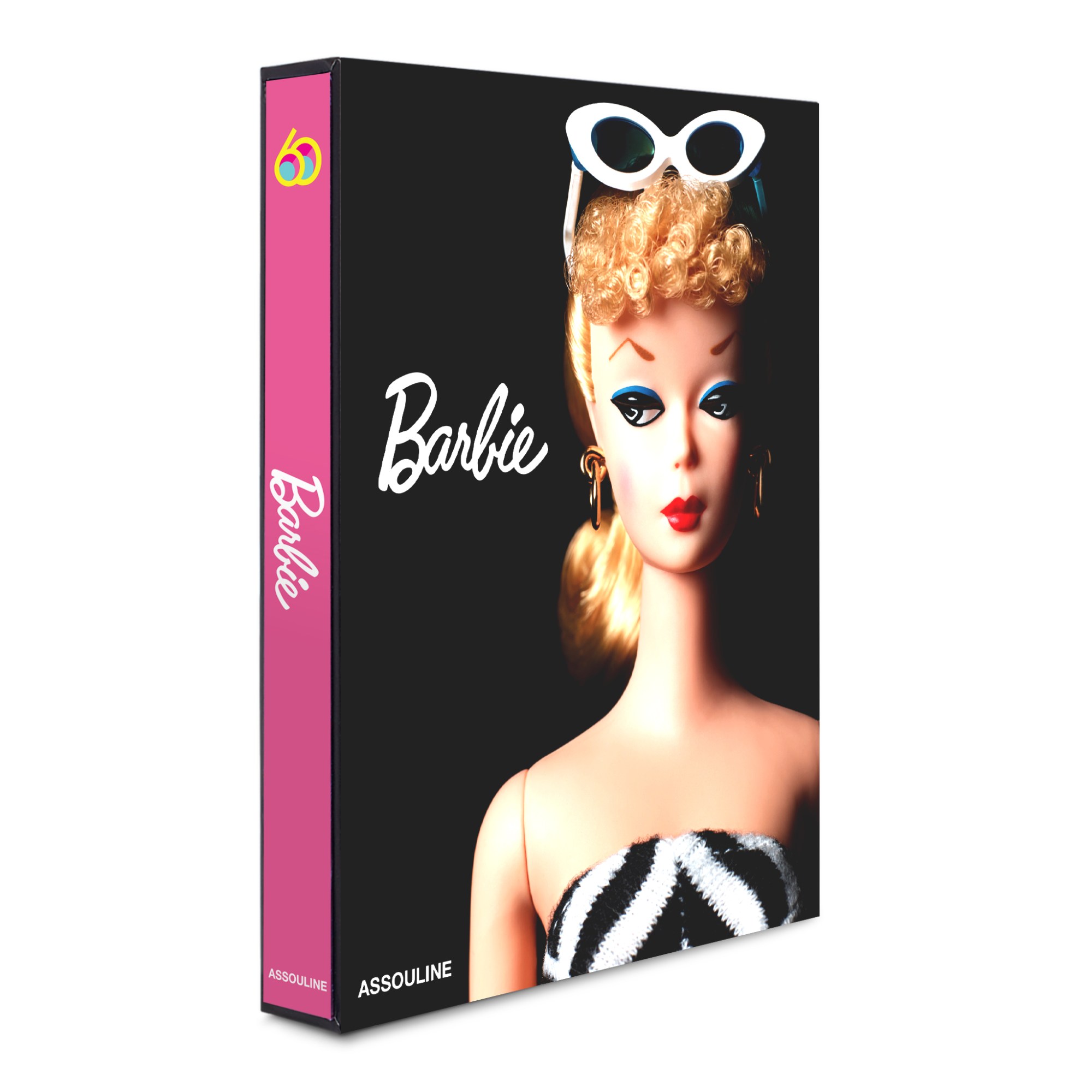Feminist author Susan Shapiro’s book Barbie: 60 Years of Inspiration makes it clear that the famous doll’s significance transcends the critiques of her unrealistic body measurements and pink outfits. Barbie’s lifestyle was designed to show girls as young as three years old that there were options beyond homemaker, a radical idea for women in 1959 — the year Barbie hit shelves.
“Barbie’s story is like her creator Ruth Handler’s… Handler was dressing up and putting on makeup and going to work everyday when women weren’t working and running a company,” says Shapiro. “It doesn’t mean that she wasn’t smart or not doing a service for womankind, it just means that was her preference. She was a trailblazing businesswoman.”

i-D talks to Shapiro about how Barbie has evolved over the past 60 years, how the doll became a symbol of female empowerment, and what the iconic doll represents in 2019.
How did your personal history with Barbie begin?
Unlike the Chatty Cathy Baby doll I was supposed to take care of, Barbie was a cool teenager with her own job as a teen fashion model, her own pad, and wheels. I grew up in a big, traditional Midwest family of boys in the 60s. I could either be my homemaker mother or my doctor father and brothers, who all followed in his footsteps. Barbie taught me that there was a world of possibilities outside of those two paths. From there, I fell in love with Barbie.
Mirroring her independence, I begged my parents for the orange Cutlass that cruised me to college when I was 16. Role-playing with Barbies in multiple professions inspired my subsequent erratic freelance career.
It’s a common trope that Barbie is the symbol of anti-feminism and over-sexualization of women’s bodies. What do you think about that critique?
Somehow career women who enjoyed dolling up for men were deemed bad feminists, decades before Roxane Gay’s essays proclaiming that feminism could encompass contradictions, like girls who loved pink, sexist rap music, and preferred The Real Housewives of Beverly Hills to Orange is the New Black. Yet Gloria Steinem was once called “a life-sized counterculture Barbie doll” herself and her most famous picture was in a Playboy Bunny custom for an undercover story. It arguably became the image of the women’s movement (over Betty Friedan and Audre Lorde types) because she was slim, straight, white and pretty, like Barbie. Gloria Steinem and her acolytes felt the How To Lose Weight self-help book title that came with a 1965 Barbie was bad for a girl’s self-esteem
Writing Barbie, I set the doll in the context of each era. So that seemed to me to be cheekily mirroring Helen Gurley Brown’s bestseller Sex and the Single Girl. The Cosmopolitan editor, Ruth Handler’s contemporary (also from a poor family), was another controversial female pioneer who pursued passion and power, taking pride in her slim figure, fashion and profession, presenting an early incarnation of Lipstick Feminism. “A job can be your love, happy pill, your means of finding out who you are and what you can do, your playpen, your family,” Brown wrote.

Early in the book, you quote Barbie inventor, Ruth Handler, as saying that she thought it was important for a young girl’s self-esteem to “play with a doll with breasts.” Can you expand on what this means and the impact Barbie’s body has had on the minds of young girls?
Watching little Barbara and her girlfriends play with grown up paper doll cutouts, Ruth didn’t want to make another Betsy Wetsy, Tiny Tears, or Chatty Cathy baby to indoctrinate girls into being good mommies. She was convinced that doll play could be about a girl’s fantasies of being grown up. As a Freudian shrinkaholic, I was intrigued that Ruth consulted Ernest Dichter, a Viennese psychologist who analyzed motivations to buy products, like the convertible car’s sexual cachet. Dichter interviewed 191 girls and 45 mothers, asking if Barbie was nice, friendly or vain, selfish or too flashy. He found moms hated the doll they saw as cheap and vulgar. No wonder I loved her! Most of the daughters wanted to be like Barbie — sexy and glamorous — with long legs and big breasts. Dichter even suggested enlarging her bust.
I was fascinated to learn that Barbie’s creator, Ruth Handler, was a working woman who’d lived with a girlfriend and had a job as a teenager. After she married, she was bored as a housewife. She intentionally made black Barbies in the 60s as a political statement against racism. She made sure Barbie was single and Ken was just the boyfriend, never the husband. She gave Barbie lots of careers to choose from, wanting Barbie to become things real women couldn’t yet become. I think the feminists over-focused on body image.
What are some Barbie flops?
Well, when they stopped making Midge because she was no longer popular, they came back and made a family Midge where she had a baby in her stomach. But a lot of parents hated it and thought it was encouraging teenage pregnancy. So she was recalled, but you can still get her for a couple thousand on Ebay.
Then they tried to make a disabled Barbie in a wheelchair, but the wheelchair wouldn’t fit into the Dream House or the House’s elevator.
There’s also the controversy of the talking Barbie. When you would pull a string, she would say things like “Math is really hard,” or “I can’t wait to plan my wedding.” So these people, who called themselves the BLO — the Barbie Liberation Organization — stole hundreds of dollars of Barbies off the shelves and switched the voice boxes with G.I. Joe’s voice box. So then, when people would buy Barbie, she would say things like “Attack, guns!” or “I’m going to kill you!” This was actually parodied on The Simpsons.

Do you see Barbie differently after taking a deep dive into her past?
I actually came away more impressed with Ruth Handler and more clear that Barbie was always a feminist.
What are the dangers of dismissing Barbie as a role model because of her appearance?
Wanting to look pretty is not antithetical to being feminist. As I always say, I’m a raging feminist who loves men and marriage, and a lot of people don’t think that’s possible, but it is. Here I am. We have to keep opening the terminology up. You can want and have a hot body and be a feminist. It’s not like every woman has to have the same identity.
I understand why Gloria Steinem came out against the idea of being Barbie-skinny. On the other hand, there’s a reason why Gloria Steinem was chosen to be the image of the women’s movement. A lot of young women felt that if they had to give up being “pretty” or wearing high heels to be a feminist, then forget it. If you imply that you can’t be a feminist and also want to wear a bikini, that’s how you lose people, and we can’t afford that at this point.
Is Barbie still relevant? Will she continue to be relevant?
There’s been a resurgence in Barbie. Mattel has made some smart decisions, like their Shero line, where they pick well-known young women and make them into dolls – examples being Ashley Graham, Gabby Douglas, and Ava Duvernay. They have these fantastic, real-life role models that they’re making into Barbies. Now, it’s all about girls being as brilliant as they can be, doing anything they want. What’s also interesting is that I just saw on the cover of Time Magazine that they now have three different size Barbies — tall, small, etc.
I always felt that to be successful in business, you have to reinvent yourself. Especially as a woman, you have to reinvent yourself all the time as you get older.
Secondly, what I think Ruth Handler really got right about Barbie is that she is a beautiful little work of art. You can still get Barbies for $3-$10, which is part of the reason they say 92 percent of American girls have a Barbie, because they’re very affordable. All of the clothes, the furniture was inspired by designers all over the world. No wonder it appeals to girls. They’re gorgeous.
Another resurrection is the Barbie collector. There’s a lot of people, like me, who grew up with Barbie and begin to collect them. I still buy them and get them for presents. What present, between $3 and $10, could you get someone that’s beautiful and you could put on the shelf? It has that nostalgic meaning.

